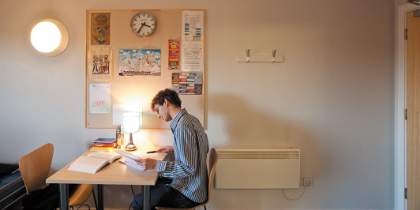
January 17, 2006, by Teaching at Nottingham
“The bright young things and their parties” – eTeaching the Greek symposium as exploration of the digital classroom
Katharina Lorenz: “The use of information and communication technologies (ICT) has become a vital part of teaching and learning in Higher Education. But while the technology to design virtual learning becomes more sophisticated, teaching strategies which cater for the needs of the distant learner still await refinement. The digital classroom enhances the learning experience, facilitating peer-learning and granting independence of study. But it can also isolate the learners, depriving them of the social support of a conventional classroom. At the same time, the teachers-turned-online tutors face new challenges, as long-distance moderators, story-boarders and IT programmers, a mix of roles that needs further analysis to establish sound academic practice. The project focussed on these two aspects, monitoring the process of designing eLearning elements as well as evaluating student views on it.
“A team of two teachers tested two forms of eLearning as part of two teaching modules, by (1) collating and delivering learning materials through a web-based learning management system, (2) sharing information and debating opinions on a web-based discussion board. The web-based learning system used in both instances was ILIAS, an open-source course management system developed at the University of Cologne (www.ilias.de).
Based on this experience, monitored in teacher logs and in student feedback (questionnaires and interviews), a third form of eLearning has been designed in a 15-month project: a Flash-MX-based virtual learning scenario for blended as well as virtual learning, incorporating information, exploration, and assessment elements.
“The Greek Symposium” was chosen as topic because of the multimedia qualities inherent in this ancient Greek institution. These drinks parties of the urban elite formed a vital element of social and political life, and provided a context for music, literature, and visual art. This complexity offers varied explorative situations for the scenario, and combines several of the sub-disciplines that constitute Classical Studies.
“The results of the first round of student evaluation and staff interviews/logs are reported. The variety of learning stimuli (Multiple Choice Questions, visual analysis trainer) has proved to cater for different types of learners. It also counteracts the threat of isolation, introducing a fresh perspective to Classics teaching, and it helps students to become responsible researchers. However, students prefer the blended-learning version. The teachers find their role most effective when close cooperation/shared knowledge on the subject exists between programmers and content providers. Again, teachers generally prefer blended-learning scenarios.
“The central implications of the project for future practice are twofold:
(1) pure long-distance learning is not desirable, even impossible in a Humanities subject where the student-teacher partnership is essentially based on analytical discourse.
(2) Subject-specific information services need to be available to facilitate effective eLearning scenarios.
Subject to these points, eClassics can successfully reach beyond the pre-set formulae of conventionally published material.”
Prof Katharina Lorenz
Associate Professor in Classical Studies
School of Humanities
Paper presented at the University’s Eighth Learning & Teaching conference (January, 2006).
No comments yet, fill out a comment to be the first

Leave a Reply